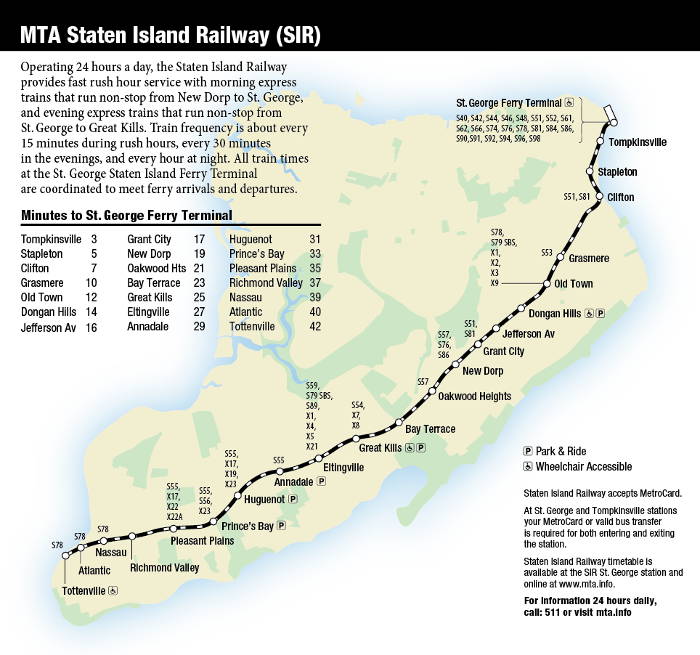The Staten Island subway system is also known as the SIR (Staten Island Railway). It started working in 1860 and has been increasingly expanding to the point of reaching 14 miles (22.5 km) of roads available today. Each year the SIR circulates around 4 million people and it currently has 21 stations.
The railway operates 24 hours a day just like the New York subway. The cheapest fare is the Single Ride Ticket which currently has a price of 3 dollars.
The Staten Island Railway doesn't connect directly to any of the 6 airports available in New York City.
Staten Island Railway
Staten Island is one of the five boroughs that form the state of New York in the United States, along with Brooklyn, Manhattan, Queens and The Bronx. It's home to more than 470 thousand people in its 102.5 square miles, making it the district with the smallest population of the American metropolis.
Since not so long ago, 1975 to be exact, the district was formerly known as Richmond, but the local authorities decided to change the name to Staten Island in honor of the Dutch settlers who first spotted the island.
During the twentieth century, this island experienced a major increase in its population due to the thousands of immigrants that reached the American State, as part of the consolidation of New York as the main financial center of the country.
Since then, Staten Island has been characterized as a residential area with large urbanizations, in which citizens are far from the hustle and bustle of bigger cities.
Staten Island offers a maritime connection to Manhattan and a bridge that connects the Island to Brooklyn. As for the district, it has several bus lines that circulate throughout the neighborhoods, while having a subway line as well.
This subway is commonly known as the Staten Island Railway (SIR) and is the only subway line in all of the five boroughs that's not connected or managed by the New York Subway. It started to operate in 1860, gradually expanding until reaching railways of about 14 miles. It circulates over 4 million travelers per year and has 21 stations throughout the eastern part of the district.
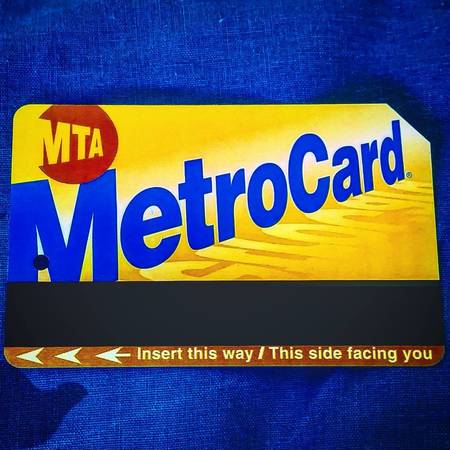
Lines
The Staten Island Railway has a single commercial line, which departs from the St. George ferry terminal to the Tottenville neighborhood, through 14 miles and 21 stations. It crosses the district from north to south, circulating on the east coast of the island, working 24 hours a day.
SIR's stations.
- Annadale Station: This station is in the Annadale suburbs, located in the South Shore area. It started to operate in 1860 and it was renovated in 1960 and 1990. It's identified by the zip code 10312.
- Bay Terrace Station: This stop circulates the Bay Terrace residents, it's located between the Justin and South Railroad Avenues. It was opened in 1900 under the name of Whitlock, but after its renovation in 1910, it ended up adopting its current name. It's zip code is 10306.
- Clifton Station: This one is located between Bay Street and Townsend Avenue, in the Clifton neighborhood. Its first opening dates from April 23rd, 1860 and is identified by the zip code 10304.
- Dongan Hills Station: This stop is located between Seaview and North Railroad avenues, in the town of Dongan Hills. It was opened in 1860 and can be located by the zip code 10304.
- Eltingville Station: it's located between Richmond Avenue and Eltingville Boulevard, in the neighborhood of the same name. It started operating in 1860, and renovated in 1939. Its zip code is 10312.
- Great Kills Station: The stop is between the Giffords Lane and Brower Court Roads, in the Great Kills neighborhood. It opened its doors in 1860, being remodeled in 1933, and then again reopened in 1997. Its zip code is 10308.
- Grant City Station: This station is located between the Lincoln and North Railroad avenues in the Grant City neighborhood. It opened its doors in 1860, but was closed between 1965 and 1968 for remodeling work. Its zip code is 10306.
- Grasmere Station: It's located between the Clove Road and Giles Place Roads in the Grasmere neighborhood. It has been in service since 1886 and its zip code is 10304.
- Huguenot Station: The stop is located between Huguenot Avenue and the West Terrace Road in the Huguenot neighborhood. It has been providing its service since 1860 and its zip code is 10312.
- Jefferson Avenue Station: Located between Jefferson and North Railroad avenues, in the Grant City neighborhood this stop operates since 1937, although it was remodeled in 1968. Its zip code is 10306.
- New Dorp Station: The station is located between the New Dorp and North Railroad avenues in the New Dorp neighborhood. It operates since 1889, and was remodeled in 1968. Its zip code 10306.
- Oakwood Heights Station: The stop is located between Guyon and South Railroad avenues in the Oakwood neighborhood. It opened its doors in 1860 and its zip code is 10306.
- Old Town Station: The station is located between the Old Town Road and the North Railroad avenue, in Old Town. It has been in service since 1937 and its zip code is 10304.
- Pleasant Plains Station: Located between Penton Street and the Amboy Road, in the Pleasant Plains neighborhood, the station operates since 1860 and its zip code is 10309.
- Prince's Bay Station: The station lies between Seguine and Waterbury avenues, in the Prince's Bay neighborhood. It offers its services since 1860 and its zip code is 10309.
- Richmond Valley Station: Located between the Richmond Valley and Amboy Road, in the Richmond Valley neighborhood. It operates since June 1860 and its zip code is 10309.
- St. George Station: It's the northern terminus of the Staten Island Railway, located on One Bay Street in the St. George neighborhood. It opened its doors in March 1886 and its zip code is 10301.
- Stapleton Station: Located between Bay and Prospect Streets, in the Stapleton neighborhood. Its inauguration date goes back to 1884, although it was remodeled in 1936. Its zip code is 10304.
- Tompkinsville Station: The station is located between Bay Street and Victory Boulevard, in the Tompkinsville neighborhood. It opened its doors in 1884 and its zip code 10304
- Arthur Kill Station: It's located right on the Arthur Kill Road, in the Tottenville neighborhood. It opened its doors on January 21, 2017, being the newest station on the line.
- Tottenville Station: It's located between the Arthur Kill Road and Bentley Street, in the Tottenville neighborhood. It has been in service since 1860 and its zip code is 10307.
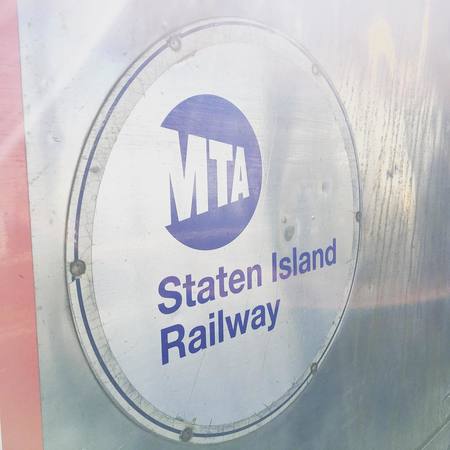 Staten Island St. George Ferry Station
Staten Island St. George Ferry Station
Connections
Most SIR stations are connected to at least one bus line, circulating passengers around those urbanizations and suburbs that the rail system can't reach. And now, the connections for each station.
- Annadale Station: This stop only has a connection to the S55 bus line.
- Clifton Station: It connects with two bus lines, route number S51 and S81.
- Eltingville Station: This stop is connected to several bus lines, which numbers are S59, S79, S89, X1, X4 and X5.
- Great Kills Station: This station connects with bus lines S54, X7 and X8.
- Grant City Station: It only has a single connection to the S51 bus line.
- Grasmere Station: It only connects with bus line number S53.
- Huguenot Station: This bus stop is connected to bus lines number S55, X17, X19 and X23.
- New Dorp Station: The station connects with bus lines S57 and S76.
- Oakwood Heights Station: It only connects to the S57 bus line.
- Pleasant Plains: It only has connection with bus line X22.
- Prince's Bay Station: The station connects with bus lines S55, S56 and X23.
- Richmond Valley Station: It only connects to bus line number X22.
- St. George Station: This is the station with the largest number of Staten Island Railway connections, having access to several urban bus lines such as S40, S42, S44, S46, S48, S51, S52, S61, S62, S66, S74, S76 and S78. To intercity bus lines S81, S84, S86, S90, S91, S92, S94, S96 and S98. As well as, to the ferry terminal St. George.
- Stapleton Station: The station connects to bus lines number S51, S52, S74, S76, S78, S81, S84 and S86.
- Tompkinsville Station: This bus stop is connected to bus lines S46, S48, S51, S61, S62, S66, S74, S76, S78, S81, S84, S86, S91, S92, S96 and S98.
- Arthur Kill Station: It only connects to bus line number S78.
- Tottenville Station: It only connects to bus line number S78.
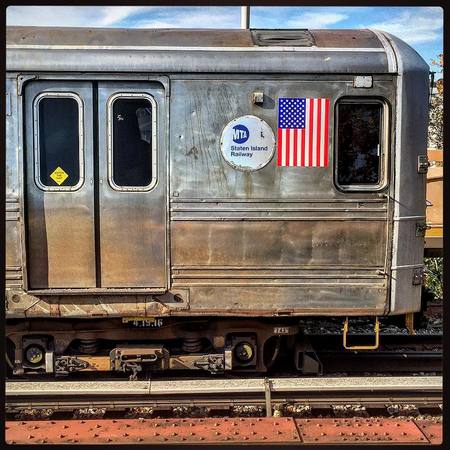
Schedule
Although the Staten Island Railway isn't part of the New York Subway, it does share its 24-hour service. The rail system doesn't stop at any time, operating full time at every hour, every day of the week. However, after 11 pm, the trains leave the stations every 30 minutes.
On the other hand, during rush hours (6:15 a.m.-8: 15 a.m. and 4:00 p.m.-8: 00 p.m.) a special express service is offered, which goes from the St. George station to Tottenville without making any stops.
SIR fares
The Staten Island Railway, like most rail systems in the world, has several payment plans ready to meet the needs of different users who frequently use this means of transportation.
It can be paid in the most frequent way, which is by purchasing tickets at the ticket offices and vending machines distributed around all the stations of the system, or it can also be paid by using a prepaid card, which is called MetroCard.
This last payment method has benefits for the user since it reduces the cost of each travel, while allowing access to special fares -just if the person applies for them.
- Single Ride Ticket: It's the simplest alternative for SIR'S users. It offers a single trip per passenger, without limit of stations. It's ideal for those who aren't regular travelers on the railway, and only use it eventually. Its price is $ 3.00 and it's only available as a physical ticket.
- 7-Day: This is a weekly payment plan designed for passengers who travel on the Staten Island Railway more often. It's a good option if you are planning to stay a couple of days in this district and want to move throughout the district. Its price is $ 32.00, you can only access the plan by getting a MetroCard.
- 30-Day: This is an excellent choice for the Staten Island residents who use the railway as their main means of transportation. It allows users to pay a single monthly payment, with unlimited travel, for a price of $ 121.00. You can only access it using the MetroCard.
- Single Ride Ticket (Reduced-Fare): it allows passengers to enjoy a significant price discount on these trips, as long as it belongs to a group benefited by local authorities. The price to pay is $ 1.35 and it includes only one trip.
- 7-Day (Reduced-Fare): It allows passengers to use the SIR services for 7 consecutive days without any limitation on the number of trips they can take. Only those that are part of a group benefited by local authorities can purchase this plan. The price to pay is $ 16.00. It can only be paid using the MetroCard.
- 30-Day (Reduced-Fare): Passengers can travel in the railway system without any limits in this plan, for 30 days, making a single monthly payment. It's possible to access it through the MetroCard, but it's only available for people who belong to a group that receives the benefit of the local authorities. It costs 60.50 dollars.
Note: Those who receive the reduced rate benefits are people with disabilities and elderly people (passengers over 65 years old).
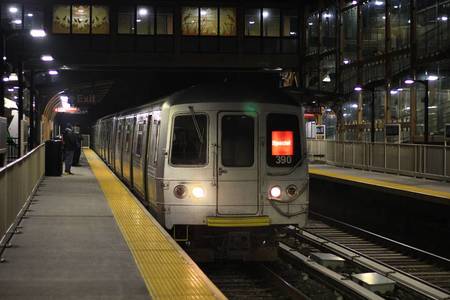
Regulation
The Staten Island Railway regulations are designed to protect the safety of all passengers who use the service on a daily basis. In fact, most of the accidents that happen in the subway are due to slips or loss of balance near the rails, causing some people, unfortunately, to fall on the tracks. Therefore, it's important to keep in mind the following suggestions:
- If any of your properties fall on the tracks, avoid going down to pick it up completely. Such action could result in a fatal accident. In any case, notify the situation to the authorities of the system, so they can find a solution to the problem.
- If you're carrying children with you, keep them by your side and hold their hand at all times, this could prevent any risk.
- Don't lean on the edge of the platforms to see if the train is approaching, as it endangers your physical integrity.
- Smoking is not allowed on subway trains, in case of doing so, you will get a penalty fee according to the rules of the system.
- Before attempting to board when the railway arrives at the platform, wait for it to completely stop.
- Avoid running on the andes of the railway, falling down for this reason is usually common.
- When the railway stops, be careful with the space that separates the car from the platform, as it could injure you from falling into it.
- If you are transporting baby strollers, try not to interfere with the free movement of other users.
- In case of finding suspicious luggage, without any apparent owner, move away from it and call personal security.
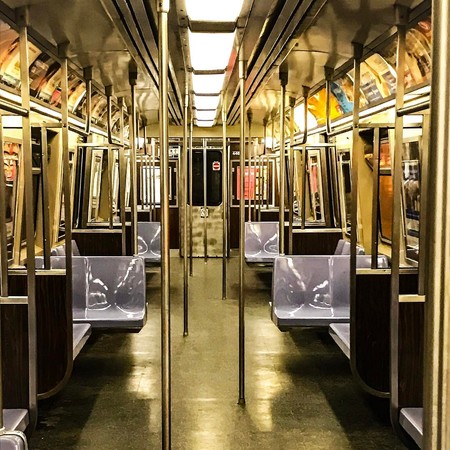
Connections to the airport
The Staten Island Railway doesn't have a direct connection to any of the 6 airports located in New York City. However, it's possible to get to the John F. Kennedy International Airport with the help of public transportation and departing from the island that makes up this New York district.
To get to the airport, you'll have to arrive first at the Grasmere station where you'll be able to access a bus stop called Clove Rd / Grasmere, where the S53 line runs - the only bus connection to this station.
Once you board the bus, you will travel for about 20 minutes till you arrive to 4 Av / 86 St. There you will go to the New York Subway station 86 St., which transits the R line of the subway system.
The next thing is to get into any of the trains at the Atlantic Avenue Barclays Center Station, which is linked to the Atlantic Terminal Rail on the Hempstead Road. The railroads of this line drives through the Jamaica station, here you'll need to be fast to catch the monorail AirTrain JFK RedJamaica, which goes straight to the airport.
From the Jamaica railway stop, it's necessary to transfer to the Jamaica Station of the monorail service. Once you have tackled one of the monorails of the system, you only have to enjoy the journey, which takes about 10 minutes, until you reach the airport.
Remember that John F. Kennedy International Airport has 8 terminals, so you should be careful to get off at the right terminal.
The travel from the airport to Staten Island is exactly the same, but the other way around. If you prefer, you can take a taxi or a rental car near the terminals of the flight, which can be more comfortable and safe for you.

Future plans
Between the projects to improve the service of the Staten Island Railway, highlights the update of the trains that provide service to users, because in many cases already exceed 20 years of operations.
Some of the future projects that will be made to improve the service of the Staten Island Railway involves the renovation of the trains that currently offer their service to passengers, since some of them have been operating for over 20 years.
However, the company that's responsible for providing the service has opted to improve the vehicles instead of changing them, despite the fact that the local authorities have tried to carry out the project. In any case, it's possible that by 2023, the old wagons will be replaced for new units.
Several authorities of the district have been discussing about finishing the connection of the Staten Island Railway with the New York Subway, in order to help circulate passengers to the city center. They have even talked about building a bridge that linked the island with the rest of the districts, in addition to the existing one, and where trains could pass. Political and economic issues have postponed this possibility.
On the other hand, there are people who have suggested the construction of a new station between the Grasmere and Clifton stops, since it's the longest road between stations. This new enclosure would be helpful for residents of the Rosebank neighborhood.
Tourist places
Staten Island is the least visited district of New York, so its rarely an attractive place for tourists. Besides, for being a residential area, it discourages many entrepreneurs to promote the arrival of visitors to the place. However, it doesn't mean that the island doesn't have beautiful and interesting places to offer.
One of the amazing places of Staten Island is the Richmond County Bank Ballpark, which is about 140 meters from St. George Station, where the ferry terminal of the same name also operates. Although it may be something small, its facilities counteract that fact, since they offer the greatest comfort possible to visitors when it comes to experiencing a live baseball game. Not to mention that the price is usually lower than in other bigger stadiums within the same city.
Metro map of Staten Island
Map via web.mta.infoSee map full resolution. It may take a little bit to load.
Staten Island SIR map
- Also Known As: SIR
- Passengers/Day 28200
- Fares: 2.50
- 24h operation: Every night: 20 subway lines, SIR, PATH
- Air Conditioning:
- Walk between platforms: 0
- Driverless trains: 0
- Screen Doors Platforms: 0
- Operator: Staten Island Rapid Transit Operating Authority (SIRTOA), a division of the NYCTA
- 2.50$
- Staten Island Metro Official Website
Help us
If you consider that the information we provide is wrong, not accurated, outdated, translation contains errors, and you would like to help us to improve the file...you can contact us here.
Feel free to contact us if you dont find the system you're looking for and we'll add it as soon as we can!
Thank you very much!







